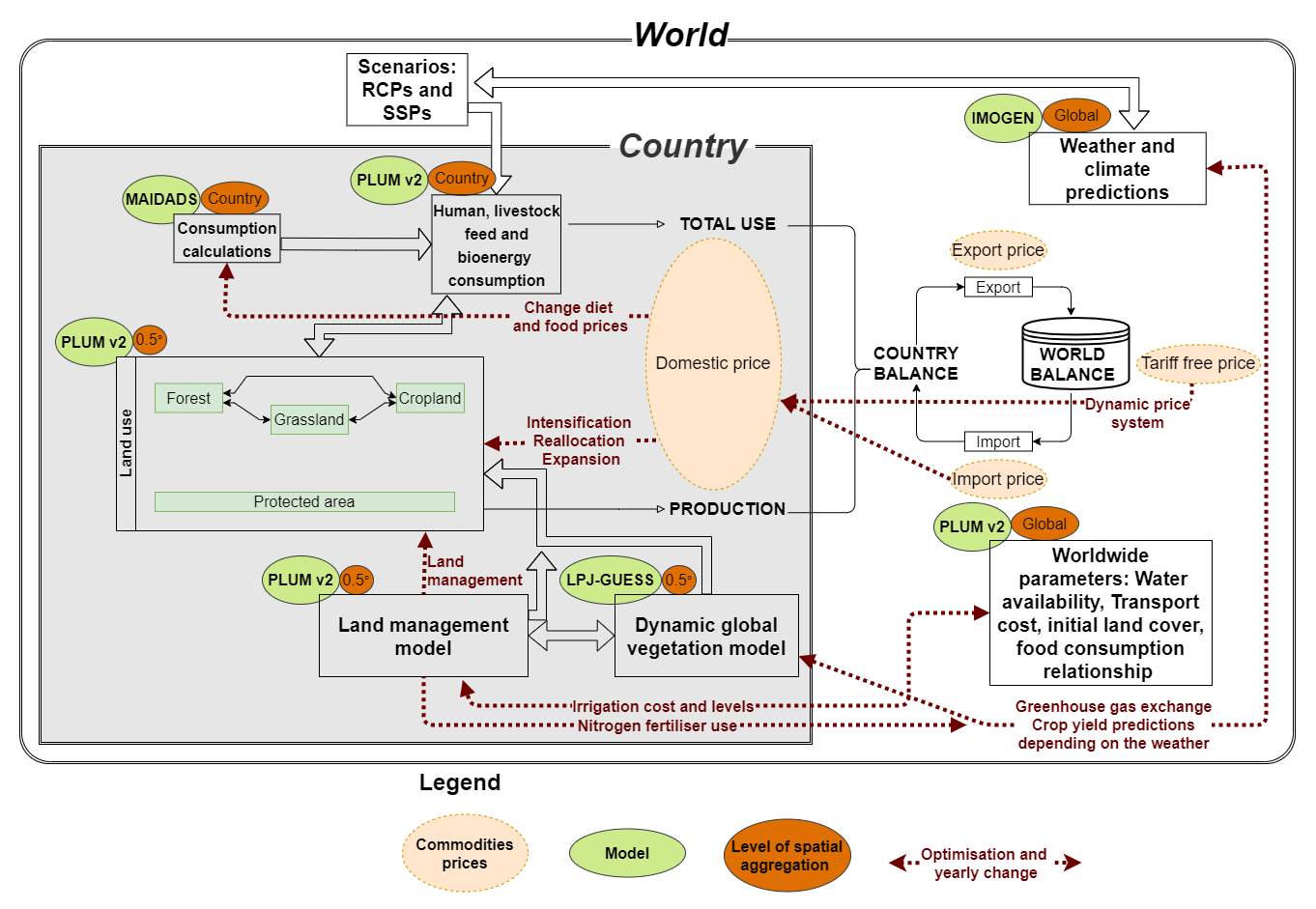PLUM (Henry et al., 2022; Alexander et al., 2018) simulates the demand and trade of food goods (e.g. cereals, oil crops, pulses, starchy roots, sugar, fruits and vegetables, wood, and dairy and meat products from ruminant livestock and monogastric livestock) and forest products based on least-cost optimization principles by adjusting commodity prices instead of assuming market equilibrium, allowing short-term surplus and deficits. This includes the costs of irrigation, fertilizer use and management intensity (e.g. pesticide and machinery use). PLUM constrains irrigation use from water availability at the basin level derived from the LPJ-GUESS run-off outputs, after adjusting for other uses and environmental limitations. Therefore, changes in water resources as well as plant requirement under future climates can drive adaptation responses in land management. PLUM captures the relationship between food demand in each country and income and food prices using a Modified, Implicit, Directly Additive Demand System (MAIDADS) approach (Preckel et al., 2010; Gouel and Guimbard, 2018). Prices are endogenous in PLUM and are adjusted through international commodity trade imbalances, while populations and country incomes are exogenously prescription often using SSPs scenarios (O’Neill et al., 2014).
Further information available here.

Selected references
Alexander P, Arneth A, Henry R, Maire J, Rabin S, Rounsevell M (2023) High energy and fertilizer prices are more damaging than food export curtailment from Ukraine and Russia for food prices, health and the environment. https://doi.org/10.1038/s43016-022-00659-9
Henry R, Arneth A, Jung M, Rabin R, Rounsevell M, Warren F & Alexander P (2022) Global and regional health and food security under strict conservation scenarios. Nature Sustainability, https://doi.org/10.1038/s41893-021-00844-x
Alexander, P., Rabin, S., Anthoni, P., Henry, R., Pugh, T.A.M., Rounsevell, M.D.A. & Arneth, A. (2018). Adaptation of global land use and management intensity to changes in climate and atmospheric carbon dioxide. Global Change Biology, 24(7), 2791-2809, doi.org/10.1111/gcb.14110
Engström, K., Rounsevell, M.D.A., Murray-Rust, D., Hardacre, C., Alexander, P., Cui, X., Palmer, P.I., Arneth, A. (2016) Applying Occam's razor to global agricultural land use change. Environmental Modelling & Software, 75, 212-229.